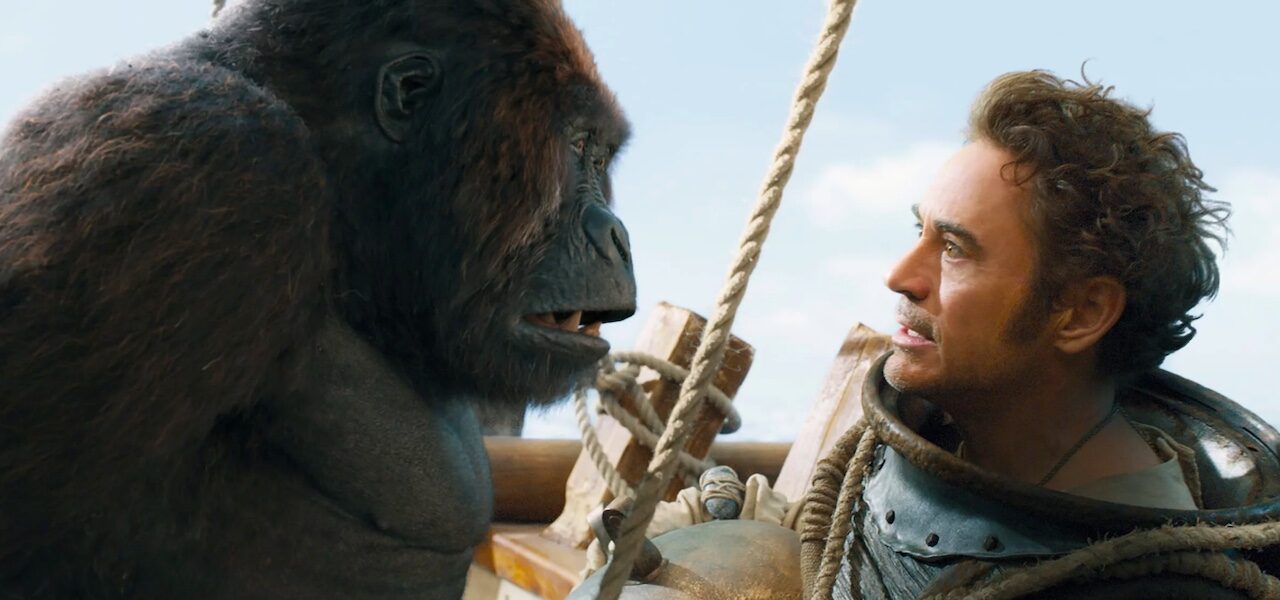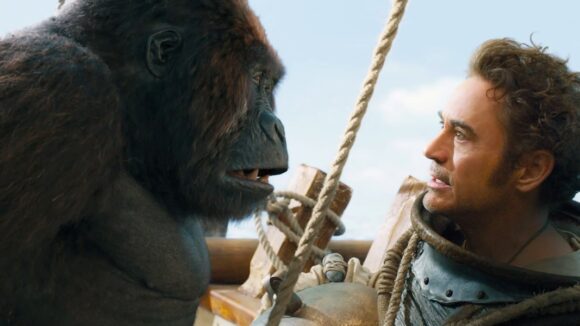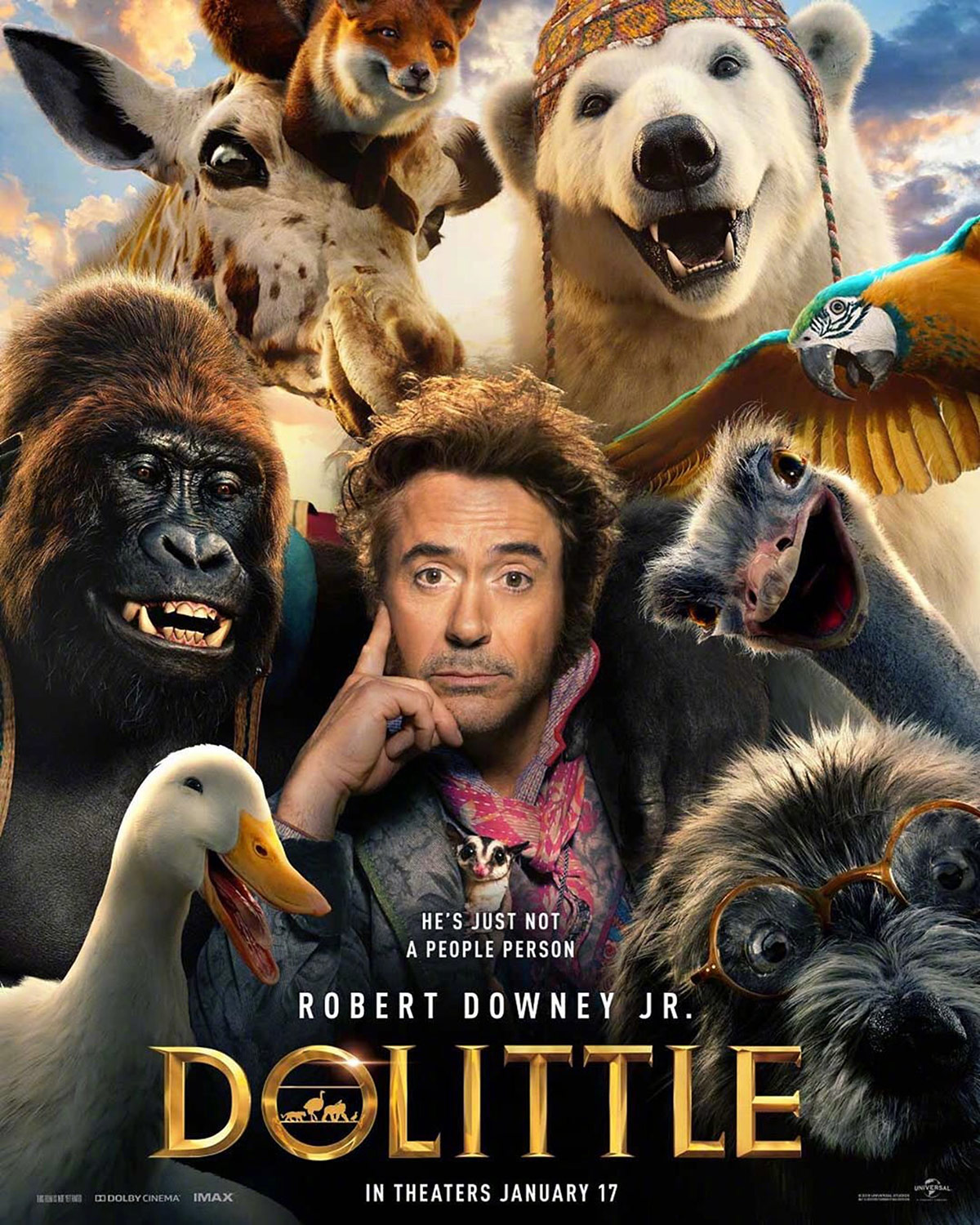

‘Dolittle’ Doesn’t Use CG Animation Very Well: Here Are The Key Complaints From Critics
Dolittle has reached screens on a wave of foreboding. News of delays and extensive reshoots spoke of a troubled production. The trailer landed in October to general derision. The movie finally comes out today, and reviews do little to dispel doubts.
Few critics have a good word to say about Dolittle, which stars Robert Downey Jr. in the title role of the quirky veterinarian who talks to animals. They have slammed its incoherent story, unfunny gags, dodgy sound mixing, and lackluster performances from the starry cast — not least Downey’s wayward accent (Welsh? Scottish? Jamaican?). Some compare the film unfavorably with the much-maligned Cats. At the time of writing, its critics’ score on Rotten Tomatoes is an abysmal 17%. (It’s worth noting that the audience score is 75%.)
A running theme in reviews is the misuse of cgi. The hybrid film sees human actors interact with a menagerie of animated beasts. These were handled by MPC, which is familiar with photorealistic animals — it delivered plenty of them on Jon Favreau’s The Jungle Book and The Lion King. Framestore, another powerhouse vfx studio, was also involved. The production vfx supervisor was John Dykstra.
While the reviewers generally don’t criticize the quality of the animation itself, many question the way the animals are conceived and integrated into the live-action environment. Some explore the wider implications of this kind of hybrid filmmaking. We’ve distilled their commentary into a few key takeaways:
- If you’re doing a hybrid film, make sure the animation and live action feel like part of the same world. In Dolittle, the eyelines between humans and animals don’t always meet and continuity isn’t maintained across cuts. Here’s Kristen Page-Kirby of The Washington Post: “As for the animation, it’s fine in close-up, but whenever a cg critter appears in the same frame as a human being, man and beast don’t seem to be occupying the same screen. Or planet. Or dimensional reality.”
- It may help to hire a director experienced in hybrid filmmaking. Before helming Dolittle, Stephen Gaghan was known for writing and directing gritty political dramas like Traffic and Syriana. The result: he struggled with the animation component, according to sources, and Chris McKay (The Lego Batman Movie) and Jonathan Liebesman (Teenage Mutant Ninja Turtles) were brought on to help with rewrites and reshoots. A similar problem seems to have plagued Cats and its director Tom Hooper.
- Consistent design across the animation is crucial, too. Dolittle fails to achieve this, according to Karen Han of Polygon: “On a visual level, some of the film’s beasts are rendered realistically, while others (notably a dragonfly voiced by Jason Mantzoukas) look more like cartoons.”
- If the animated characters talk, they have to sound right. Writing in Vulture, Bilge Ebiri laments that the animals’ “dialogue doesn’t quite match their cg lips, and [their] voices don’t sound like they’re coming from any part of the film’s physical space.” Rolling Stone’s Peter Travers adds: “It’s typical of the film’s tone-deaf sound design that a tiny dragonfly and a hulking dragon talk at the same volume level.”
- In an age of mass extinctions, stories about animals may have new responsibilities. Lara Zarum of The Globe and Mail makes an intriguing point: “It’s a deeply upsetting irony that as animation technology becomes more photorealistic, the creatures it conjures become more imperilled. Maybe it’s appropriate, in a profoundly depressing way, to present children with this artificial fantasy of nature and its inhabitants; it’s increasingly the only version they’re likely to see.” Manohla Dargis puts it more bluntly in The New York Times: “If animals really could talk, they wouldn’t be pleasantly cooing and chatting us up as the world burned. They’d be screaming.”
Dolittle is directed by Stephen Gaghan and written by himself, Dan Gregor, and Doug Mand, from a screen story by Thomas Shepherd. The characters come from Hugh Lofting’s original children’s books. Joe Roth, Jeff Kirschenbaum, and Susan Downey produce, with executive producers as Robert Downey Jr., Sarah Bradshaw, Zachary Roth, and Jonathan Liebesman. The film is released by Universal Pictures in the U.S. today.

